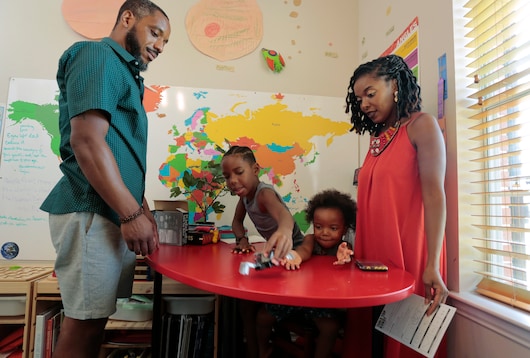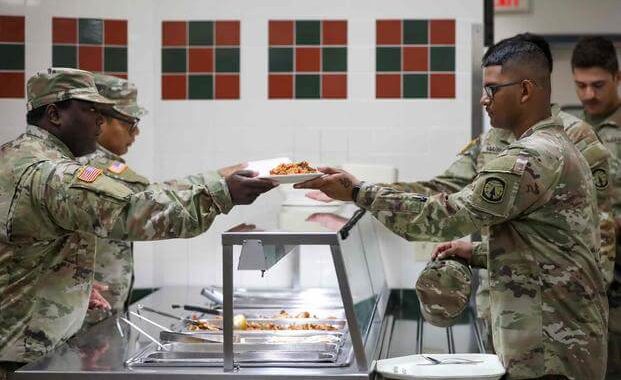Love or Hate Them, Pandemic Learning Pods are Here to Stay — and Could Disrupt American Education
8 min read
That is what Kendra Newton is doing: The 24-year-old first-grade teacher resigned from her job with Orange County Public Schools in Florida after learning she would have to teach in-person this fall. She is moving across the country to Oregon, where she will lead a pod of eight students — for a higher salary than she earned in Florida.
“It gave me a way to feel safe working,” Newton said. “I will have guaranteed money coming in, and a stable idea of what my life will be like, because there won’t be a school district changing its mind every two seconds. For my mental health, it’s just a better option.”
No reliable data exists on how many teachers have left, or are considering leaving, their jobs to teach pods. But worried school officials are sending emails claiming that pods pose just as much of a health risk as returning to the classroom. Some are warning teachers that the pods will drive inequity. Others are scrambling to figure out if they can somehow co-opt the pod model.
Still others are announcing that employees who try to lead pods while keeping their regular teaching jobs will risk getting fired — even as they hope they do not have to follow through on that threat.
“As a reminder … [Arlington Public Schools] teachers are not permitted to take on additional positions such as tutoring or learning supervision during the school day,” officials in the Northern Virginia district wrote in a recent message to staff. “Nor are they allowed to tutor students they work with … outside of the classroom for pay.”
Stacy Reiber, a New Jersey elementary school teacher, quit a 20-year teaching career this summer to lead a pod. Come fall, she will instruct six children in a private home — first outside, then in a garage with heaters — for $15 per hour per child (a small pay cut).
“I’m going to get to know every kid in my pod, because I won’t be juggling 25 kids like I was,” Reiber said. “All teachers want smaller classrooms — so I do believe, actually, that people are going to love what pods offer, and I do think there’s going to be a shift beyond the pandemic.”
She pointed to long-running and well-established problems with the public school system: underpaid teachers, an overemphasis on the use of standardized test scores for evaluation and too-large class sizes.
“I truly hope,” she added, “that [the pods do] reshape American education.”
‘It’s not exactly the typical situation’
As school district after school district announced plans for an all-virtual fall, parents flocked to Facebook groups with titles such as “Pandemic Pods and Microschools” or “Matching Students with Teachers … (Pandemic Pods).” They sought other families to pod with and teachers to lead the groups. Educators began joining these groups and soon formed groups of their own.
Felicia Drake, principal of a Northern Virginia elementary school, said the sudden push for pod learning has shocked her beyond anything else in her 30 years as an educator. The change is so seismic, she said, that it calls to mind the development of charter schools.
“That would be the only thing I could compare it to,” Drake said. “Except this is faster. And, although I don’t support [pods], I do get the appeal: There just aren’t enough answers as to how we can keep people safe right now.”
Data on how many teachers are choosing to lead pods this fall is difficult to gather partly because many educators are hiding their activities from school districts. Some school leaders contacted by The Washington Post said they could not estimate the number of pod leaders in their ranks for this reason. Another reason is that the school year, although underway in a few places, has not started for much of the country, and some teachers are leaving the decision until the last minute.
Still, it is clear that the coronavirus is driving retirements nationwide, including among teachers — 79 in one Utah county alone. Worry over impending teacher loss is widespread, with school leaders nationwide speaking out against pods in recent weeks.
In Minneapolis, the school district denounced them as perpetuating “systemic inequities.” In Los Angeles, the County Office of Education declared that pods “do not align with current Public Health directives.” And in Denver, the Board of Education posted an extraordinary, more-than-1,000-word statement in mid-August pleading with parents not to start pods.
“If you choose to participate in a pod, please do not hire [Denver Public Schools] teachers,” the statement reads. This “pulls [educators] away from students that need them most.”
In Fairfax County, Va., the district published a similar August message to parents noting that “tutoring pods are not part of the public school system” and asserting that pods are “not supported” by the school system.
For at least one Fairfax teacher, that message backfired.
The elementary school teacher, who spoke on the condition of anonymity for fear of retribution, had already been feeling ill-used by the school district, which is starting the year all-virtual but with the hope of sending children back to classrooms within a few weeks. Asked to submit her preference between in-person and virtual teaching, she chose to teach remotely, but her preference was ignored.
As soon as her students reentered classrooms, she would be back, too, administrators told her.
That upset her, and the email against pods made it worse: It cemented her conviction that the school district did not care about her safety. Now, the teacher has applied for five corporate jobs teaching instructional design. If those do not pan out, she will quit her position with Fairfax and lead a pod.
She knows several families that are interested, and she has already decided on the ideal setup: Two pods of seven kids each, with parents paying $300 a week per child. That will just about cover her living expenses, she said.
In Florida, Newton also concluded that continuing as a teacher would imperil her health. First, Florida Gov. Ron DeSantis (R) told some school districts that they would lose state aid if they did not reopen in person. Then, Orange County Public Schools, Newton’s employer, announced it would offer virtual instruction for the first nine days of the school year before letting parents choose between in-person and remote learning for the remainder of the semester.
Once back in the classroom, Newton said, one of her school’s only requirements was that kids had to wear masks — classes would be just as large as before, and social distancing would happen only “to the extent feasible,” according to the school’s plan. In her 20s and healthy, Newton was certain she would be among the first asked to return.
Around then, a cousin in Portland, Ore., reached out and mentioned she knew a group of families looking for a teacher. Pretty soon, Newton had hashed out the details: She would teach a pod of eight children, from eight different families. Each family would pay roughly $4,300 per child per semester.
The classes would take place from 8 a.m. to 3:30 p.m., five days a week, in the basement of a private home. She would generally follow the online offerings of the kids’ public school system, but embellish them as needed. The families would not pay her health insurance, because Newton is still on her parents’ plan.
When she tendered her resignation and told her principal of her plans, Newton said, her boss was “not thrilled” but was supportive. The principal said she understood it was a crazy time.
“I will miss Florida, but it’s really worked out well for me,” Newton said. “It’s not exactly the typical situation, but there isn’t really a typical situation right now.”
Not just for ‘the rich folks’
Some, having accepted pods as a fact of the education landscape in 2020, are trying to take advantage of the model.
In Maryland’s Montgomery County, private child care providers have organized “distance learning hubs” in which small groups of students will bring their Chromebooks to empty public school classrooms each day and participate in online learning together (spurring protest from some parents who ask why, if this program is allowed, regular school cannot reopen). In the nation’s capital, some businesses are offering families a version of learning pods. And last week, a Florida working group of business executives, public health professionals and educators formally recommended that schools develop “learning pods to support academic success [by] making spaces available with the right technology.”
In Broward County, Superintendent Bob Runcie is several steps ahead of them.
For weeks, he has been working with two local groups — the Children’s Service Council, a government group that serves children and families, and United Way of Broward County, a nonprofit that provides social services — to develop a pod system. Under the initiative, students will be grouped in pods of nine. They will spend the school day in “community spaces” such as YMCAs and Boys & Girls Clubs, Runcie said; the Children’s Services Council has published an online application seeking agencies that are willing to provide a “safe and supervised learning pod environment.”
“The desired populations are families who are unable to afford the added expense of learning pods,” the application reads. “Priority will be given to first responders and essential workers.”
Runcie estimates the program will be able to serve up to 2,000 children in the county (admittedly a small percentage of the school system’s roughly 260,000 students). Kids enrolled in the pod initiative will attend online school taught from a distance by Broward County staffers — education in the county is virtual through Oct. 1 — and will be supervised in-person by employees of whatever agency is hosting the pod.
So far, Runcie’s role in developing the pods has been to provide school data on the children most likely to benefit: those from high-poverty neighborhoods, for example.
“I think this will help,” he said. “It’s a unique pod situation, sort of like a combination of child care and after-school programming.”
In areas where school systems have been slower to pick up on pods, some teachers are taking matters into their own hands. That is what Minnesota technology and media teacher Nate Edwards is doing.
Twice a week, after he finishes his teaching duties for Richfield Public Schools, the 42-year-old father of three plans to drive to a park outside his church — once the weather gets cold, he will switch to the church basement — to teach a pod of six or seven students for an hour or two. He is not accepting payment and is hoping to recruit students from families who, like his own, could not otherwise afford pods.
“Right now it’s the rich folks that are doing this,” Edwards said. “But maybe we can learn from that and see if there’s a way we can modify it to help non-rich kids, too.”
By Hannah Natanson





